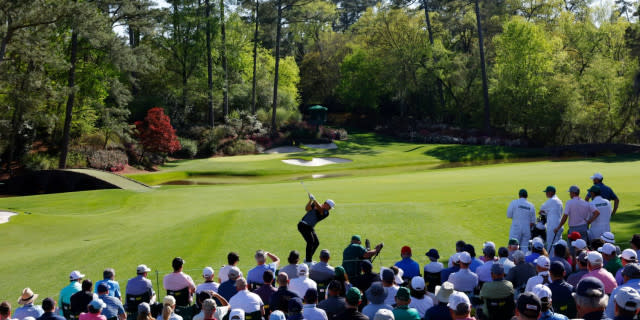
Pebble Beach Hole by Hole Guide
The U.S. Open returns to iconic Pebble Beach on the Monterey Peninsula, California. It's the sixth occasion that America's national championship has come to this spectacular venue, which has previously hosted the event in 1970, 1982, 1992, 2000 and 2010. Known for its breathtaking seaside views and small greens, we take a look at each hole that will challenge the best players in the world.
1st, 380 yards, par 4
An iron off the tee for many to try to keep the ball on the fairway, but provides an obvious early birdie opportunity.
2nd, 516 yards, par 4
Converted from a par five for the 2000 US Open and another 14 yards have been added. With a narrow green flanked by bunkers, it is a hole where most players will be happy with a par.
3rd, 404 yards, par 4
A sharp dogleg left which usually calls for a draw, not always with a driver, and an accurate approach to a green which slopes from right to left.
4th, 331 yards, par 4
The shortest of the par fours, it has a big fairway bunker on the left awaiting tee shots directed away from the ocean on the right. Expect the big hitters to have a go at the green.
5th, 195 yards, par 3
A small green is guarded by a bunker in front and a deceptive landing area to the left that will send balls into the rough.
6th, 523 yards, par 5
The only par five on the front nine is uphill and usually played into the wind as it climbs a high peninsula. The hilltop green is protected by bunkers.
7th, 109 yards, par 3
From the elevated tee, the green looks like it is surrounded by ocean, and distance control will be vital at this short and famous hole.
8th, 428 yards, par 4
The first of three difficult par fours along the water. The drive is uphill and blind and the approach is played across the beach to a green perched on another cliff. Cracking hole.
9th, 526 yards, par 4
Lengthened nearly 40 yards for the 2010 US Open and another 21 yards added for 2019. The fairway slopes toward the ocean and right of the green is a sheer drop down to the beach.
10th, 495 yards, par 4
The fairway slopes from the left with another green perched close to a high cliff, protected by a bunker on the front left and another at the back.
11th, 390 yards, par 4
A blind tee shot to a narrow fairway and a partially blind approach to a green that slopes severely from back to front.
12th, 202 yards, par 3
Extra care is needed here. When the shallow green is firm the chances of holding it are slim, with the ball likely to bound through into thick rough.
13th, 445 yards, par 4
The left-hand side of the fairway offers the best angle to approach a sloping green guarded by bunkers on either side, but that brings a large fairway bunker into play.
14th, 580 yards, par 5
A dogleg right and a climb to the green which makes it reachable for very few. Pin placings can add to the degree of difficulty.
15th, 397 yards, par 4
With the rough brought in it is often a fairway wood or iron off the tee before an approach to a well-guarded putting surface.
16th, 403 yards, par 4
No need to reach for the driver unless it is playing into a strong wind. The green slopes from right to left and is framed by tall trees left and right.
17th, 208 yards, par 3
Remembered for Tom Watson’s chip-in birdie during his 1982 duel with Jack Nicklaus and for the long iron with which Nicklaus hit the pin 10 years earlier. Hourglass-shaped green is difficult to hold.
18th, 543 yards, par 5
Stunning finishing hole that curves left along the Pacific coastline. The drive is across the rocks and ideally left of the giant tree in the fairway. The ocean is also a factor for those who decide to go for the green in two.









